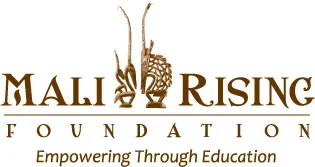By Adama Kone, Teacher Project Coordinator
Mali is a country of old civilizations and old cultures like many other countries! It is a country that is larger than many African countries with many different communities that speak more than 40 native languages. In Mali, the Bambara language is the most spoken because the population is mostly composed of the Bambara ethnic group.
With different cultures, there are different activities. In the northern part of Mali, there are a lot of handicrafts such as swords, knives, mats, purses, shoes (flip-flops) made out of animal skins etc.
These tents that we can see here, are homemade. Entire families live inside the tents. These pictures were taken in Tombouctou, northern Mali during one of my trips in 2016 out there. Over my discussions with the inhabitants of this village, I was really touched by the way a whole family can live in such houses. However, they say they really feel comfortable in these tents that give off the freshness in hot seasons because they are made of straws and branches of the palm tree. The ethnic groups that usually build these tents are Tamasheck, Tuareg, Soraih, Fulani, etc.
One of the most serious issues we talked about was their children’s education as remote communities. Since they are mostly shepherds, they are nomadic and that’s what they do for a living. The children walk for miles to go and learn in the shade under the trees as schools. Even teachers and students move from place to place looking for shade. When parents move their homes or tents elsewhere, teachers also leave with them. In Mali, they are called motional schools in the nomadic areas, northern Mali. Teachers and students work in extremely difficult conditions to achieve their goal which is education.



